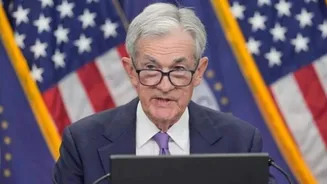Market Overview
The US markets experienced a blend of reactions on Thursday, as investors sorted through both positive and negative signals emerging from Big Tech earnings
reports and rekindled optimism surrounding US-China trade ties. The S&P 500 modestly retreated from its all-time high earlier in the week, decreasing by 0.2%, while the Nasdaq composite fell by 0.6%. In contrast, the Dow Jones Industrial Average showed a positive trend, increasing by 199 points, or 0.5%, during mid-morning trading, according to the Associated Press. These movements highlight the diverse impacts and underlying sentiments within the market.
Big Tech Earnings
Tech stocks displayed considerable divergence following the earnings announcements. Meta Platforms experienced an 11.3% decline, thereby erasing a portion of its 28% gain this year, as investors responded to larger spending forecasts for 2026. Microsoft saw a 2.5% decrease, despite reporting stronger quarterly earnings and revenue, amid worries about the slower growth of Azure and rising investment costs. Conversely, Alphabet diverged from the pattern, with an increase of 5.3% after delivering better-than-expected profit and revenue. The combined influence of Alphabet, Meta, and Microsoft, representing nearly 14.5% of the S&P 500's total market value, underscores their potential to sway the broader market's trajectory, showcasing the significant impact these tech giants wield.
US-China Trade
Amidst the fluctuations in market behavior, the focus also turned to the rekindled enthusiasm surrounding US-China trade relations. US President Donald Trump characterized his meeting with Chinese President Xi Jinping as a '12 out of 10' and declared plans to decrease tariffs on Chinese goods. However, analysts cautioned that despite the optimistic rhetoric, underlying trade tensions remained unresolved. The prospect of easing trade restrictions and the ongoing dialogue between the two nations continue to be important factors, demonstrating the intricate nature of global economic interactions and market expectations.
Corporate Performances
Individual corporate performances painted a mixed picture across various sectors. Chipotle Mexican Grill faced an 18% slump after revising down its sales growth forecast, attributing the decline to 'persistent macroeconomic pressures.' Conversely, Eli Lilly's performance was boosted by robust sales of its diabetes and obesity drugs, Mounjaro and Zepbound, leading to an upward adjustment in its annual guidance. Sherwin-Williams witnessed a 2% gain after exceeding profit estimations, despite anticipating a 'softer for longer' demand outlook, while Visa advanced 1.5% on stronger-than-projected outcomes. These diverse responses underscore the sensitivity of market sectors to both global economic trends and individual company accomplishments.
Federal Reserve
The Federal Reserve's stance on interest rates also played a key role in the market's behavior. The 10-year US Treasury yield increased to 4.09% from 4.08% the day before, after Federal Reserve Chair Jerome Powell indicated that a rate cut in December 'is not a foregone conclusion.' Traders still anticipate a rate reduction later in the year, though with less certainty, according to data from CME Group. These sentiments and expectations highlight the impact of monetary policy on market attitudes and the cautious approach prevailing among investors.



















